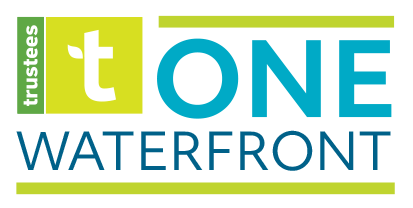Parks We Love: The High Line, New York City
A stretch of vibrant green space winds through a concrete and steel landscape. Elevated above, below and through an urban sprawl of buildings on Manhattan’s west side, it’s a dynamic place visited by millions each year, and host to numerous free community events, artwork, and performances.
The setting is New York City’s award-winning High Line Park, stretching for 1.45 miles, from Gansevoort St. to 34th Street. Park construction began in April 2006 after a community-led effort to save the historic rail line on which the park is now built, from demolition. Over the last decade, the once-derelict, elevated tracks have been transformed into accessible, welcoming and beautiful public space. To date, the nonprofit formed to protect it, Friends of the High Line, has raised over $300 million in public and private funding for its construction. The park was completed in stages, with the first section opened to the public in June 2009, and the most recent section, called “The Spur,” opened in spring 2019.
“When the High Line welcomed its first visitors 10 years ago, we never imagined that it would become an icon of New York and one of the city’s most visited sites,” said High Line Co-Founder Joshua David in a press release announcing The Spur’s opening. “Now the Spur, with its 360° views of New York City, provides visitors new ways to connect with one of the most dynamic urban environments in the world.”
Currently, the High Line features more than 500 types of trees and plants, of which more than half are native species, providing food and shelter for wildlife, and shade and beauty for visitors. The space is owned by the City of New York, but programming, maintenance, and operations are run by The Friends of the High Line. It’s a park that has seen tremendous growth—forecast to generate more than $1 billion in tax revenue over 20 years—and has been an inspiration for our One Waterfront Initiative.
A challenge for the park in its early years was better engaging and serving the local community, as the initial throngs of visitors did not accurately reflect the diversity of the surrounding neighborhood populations. In response, Friends of the High Line launched new initiatives geared toward making the park an equitable and welcoming place for all. Those initiatives continue today as an integral part of the space, and include expert-led, ongoing community engagement efforts, Youth Corps programs and free programming—designed with community input. From 2010 to 2017 park visitation by people of color increased from 21% to 35%, according to a presentation from the High Line Network , while overall visitation numbers jumped from 1 million to 7.5 million.
“There’s no question that the High Line is viewed as an economic success, but will it also be considered a place that benefits everyone?” wrote High Line Co-Founder and Executive Director Robert Hammond in a fall 2016 edition of the High Line Magazine. “That’s an increasing focus for us...we’re working to understand our role as stewards of public space from a racial and social equity perspective.”
Today the park hosts hundreds of activities and programs to support the diverse communities surrounding the park, and park organizers encourage local engagement, inclusive gatherings, and unique experiences—everything from historical tours to mambo dance parties to interactive theater. It has served as a model for other cities across the world.
“To our friends, neighbors, and visitors, we say; you are welcome here,” reads a park sign from the Friends of the High Line. “No matter who you are, what you look like, who you love, how much money you have, what your religious beliefs are, or where you are from, the High Line is for you...it is important that we do not become complacent in our mission to cultivate equitable and open public spaces that reflect and celebrate the diversity of our communities.”
With a visionary park in hand, and on-the-ground experience with providing equitable and welcoming space for all in mind, Friends of the High Line formed the High Line Network, a group of other cities, leaders, and designers developing infrastructure reuse projects of their own. The goal: to help share lessons-learned and best practices, as more cities look for ways to repurpose disused infrastructure and provide welcoming, open, green space for communities to enjoy—now and in the future.
The One Waterfront team had the opportunity to attend a symposium hosted by the High Line Network this week and we look forward to posting a Q&A recap in the coming days.
###
About this series: The Trustees’ One Waterfront initiative is a bold, new vision for establishing a resilient urban waterfront. Yes, the vision is big, and new for Boston, but we have the benefit of following in the footsteps of those who have paved the way. Many waterfront parks designed for climate resilience have emerged over the past few decades all along the world’s coastlines and are models to emulate and learn from. The lessons learned from these pioneering open spaces—in science, design, and beyond—have and will continue to provide The Trustees and our partners with an expansive knowledge base for planning practices as we progress toward our vision for iconic, public open spaces on the Boston Waterfront. Click here to see past posts in our ‘Parks We Love’ series.
[Story thumbnail Image: Bryan Ledgard [CC BY 2.0 (https://creativecommons.org/licenses/by/2.0)]]


